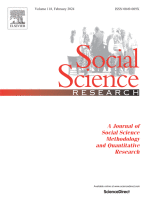Housing affordability is a growing challenge for households in the United States and other developed countries. Prolonged exposure to housing cost burden can have damaging effects on households, and, in particular, children. These burdens can exacerbate parental stress, reduce investments in children and expose households to greater neighborhood disadvantage.
In this study, we use national survey data to assess whether cumulative housing cost burden exposure is associated with disadvantages to children’s well-being and health. We observe that long-term exposures are linked to lower achievement in math and reading standardized test scores, as well as higher levels of behavior problems. Moreover, we identify that three mechanisms–caregiver distress, economic strain, and neighborhood disadvantage–operate as mediating pathways for these disadvantages to different degrees between these three outcomes.
Overall, our study highlights how the dimension of time is increasingly important to our understanding of the challenges that families face related to housing affordability.

